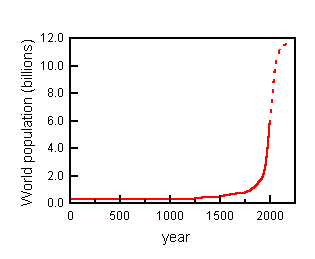

Is there any life in the Universe beyond Earth? There's no evidence that there is, but it seems likely--there's nothing special about the Earth.
What conditions led to the origin of life on Earth, and how likely is it those conditions have occurred elsewhere in the Universe?
WHAT IS LIFE?
Common features:
LIFE ON EARTH
building blocks: relatively small compounds containing carbon, oxygen, hydrogen and nitrogen (and sometimes sulfur).
Chemical evolution. Amino acids and nucleotides must have formed before life.
Fossil records of single-celled life go back 3.5 billion years and perhaps earlier. Must have started earlier, but step from chemical to biological evolution has left no record.
Other chemical bases for life
It does not seem likely that life can be based on significantly different chemistry.
LIFE ON OTHER PLANETS IN THE SOLAR SYSTEM
Moon, Mercury lack liquid water, protective atmospheres
Venus too hot, lacks water
Titan has methane/ammonia/nitrogen atmosphere, but is probably too cold
Europa, Ganymede and Callisto may have liquid water--perhaps most likely site for other life in Solar System
Mars too cold and lacks liquid water, but formerly had more atmosphere, higher temperatures and running water. Perhaps fossils of early life (microorganisms) will be found there; it's conceivable some primitive forms of life evolved to survive changing conditions.
GREEN BANK (or DRAKE) EQUATION
Estimated number of technological civilizations present in Milky Way presently =
average rate of star formation (10 / year)
x fraction of stars having planetary systems
x average number of planets within life zone for various types of star and star system
x fraction of habitable planets that develop life
x fraction of life-bearing planets on which intelligence appears
x fraction of intelligent life forms that develop technology
x average lifetime of a technological civilization
= 100-1 billion ?
THE EXTINCTION OF THE DINOSAURS
Possibly cause: impact of large meteorite results in "nuclear winter,"
Evidence:
Extinctions show some evidence of being periodic. Are they caused by some distant companion of the Sun, Nemesis, that passes through the Oort cloud every 26 million years, showering Earth with meteorites? Or by the Sun passing through a spiral arm?
HUMAN POPULATION GROWTH
current rate of growth of world population: about 80 million people per year. Population passes 6 billion in 1999; some predict levelling off at about 12 billion.

Source: United Nations Population Division, Department for Economic and Social Information and Policy Analysis
Can Earth support this population?
COMMUNICATION AND SEARCH FOR EXTRATERRESTRIAL INTELLIGENCE (SETI)
If average lifetime=1 million years then the average distance between civilizations in the galaxy is 150 ly, or 300 years for messages to go back and forth
If they exist, should we contact them?
Communications via radio signal
Earth has been broadcasting in the radio frequency range for most of this century (Marconi, 1895-1901; invention of vacuum tube, Edison, Fleming 1904, De Forest, 1906; first transatlantic contact, 1901).
FM broadcasts since 1936 (Edwin Armstrong). A characteristic of terrestrial radio signals as seen from other solar systems is that they are strongest in the plane tangent to the Earth's surface, and so they would vary with time as the Earth rotates (strongest when eastern US and western Europe are "rising" and "setting"). Earth is "brighter" than the Sun at radio frequencies!
SETI search is ongoing
your instructor